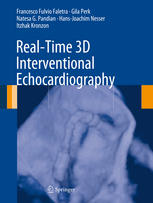

Most ebook files are in PDF format, so you can easily read them using various software such as Foxit Reader or directly on the Google Chrome browser.
Some ebook files are released by publishers in other formats such as .awz, .mobi, .epub, .fb2, etc. You may need to install specific software to read these formats on mobile/PC, such as Calibre.
Please read the tutorial at this link: https://ebookbell.com/faq
We offer FREE conversion to the popular formats you request; however, this may take some time. Therefore, right after payment, please email us, and we will try to provide the service as quickly as possible.
For some exceptional file formats or broken links (if any), please refrain from opening any disputes. Instead, email us first, and we will try to assist within a maximum of 6 hours.
EbookBell Team

4.8
94 reviewsAdvances in technology and human skill have made possible percutaneous catheter-based procedures for a wide spectrum of structural heart disease. A growing number of structural heart diseases that over the past two decades would have required open heart surgery can be safely treated using percutaneous catheter-based procedures.Traditionally, guidance of catheter-based procedures is done using fluoroscopy and two-dimensional transesophageal echocardiography (2D TEE). The recent introduction in the clinical practice of RT 3D TEE has overcome most of limitations of 2D TEE. The purpose of this book is to describe the use of this imaging modality in percutaneous interventional procedures underlying its growing role and acceptance among the interventional cardiologists but also emphasizing areas of weakness. Because today interventional cardiology ranges from closure of atrial and ventricular septal defects, to repair of mitral regurgitation and aortic stenosis, from the closure of left atrial appendage and prosthesis dehiscence, to the recent use in electrophysiological procedure, this book targets not only specialists in echocardiography and interventional cardiology but also general cardiologists. General cardiologists will find in any chapter anatomy of the structure treated (i.e. atrial septum, mitral valve…), a description of the morphopathology as seen with RT 3D TEE (degenerative or ischemic mitral regurgitation) the up-to-date indications to the specific percutaneous treatment and typical and unusual clinical cases.